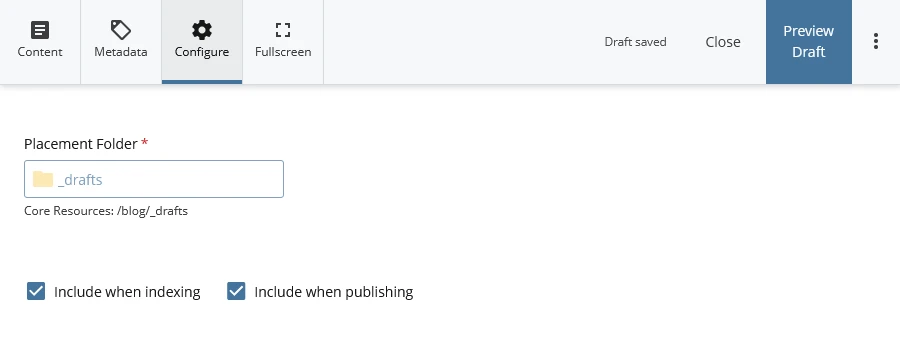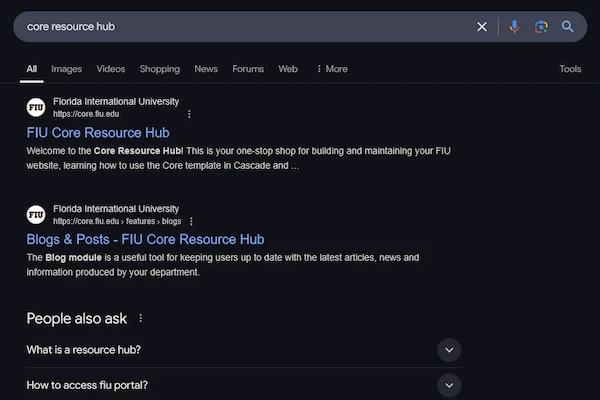It's happened to all of us: You're working on a page and decide to hide it from the navigation until it's time to go live. However, the next day you get a call from someone saying they found it on Google! Why did that happen?
The short answer is that visibility in the navigation, on Google and your website are three different characteristics that are related, but not the same. Simply put, just hiding pages from the navigation is not the right way to archive content in Cascade.
Hiding pages in Cascade
Hide from Nav
True to its name, the Hide from Navigation setting found in folder assets affects visibility on either the main or sub-navigation of your website but does not affect whether the page can be reached by users or gets indexed by Google.

Landing pages are a common example of when you might want something hidden from your website's navigation but indexed by Google. That way, the landing page is not taking traffic away from other related parts of your website but can be reached via Google or by links in marketing materials.
Include when indexing (or don't)
If you want to prevent a page (or other asset) from being used dynamically within Cascade you should uncheck the Include when indexing option in your page's configuration. This would prevent a profile, for example, from appearing in a list of profiles. But this is only one part of a longer process to archive content without completely deleting it. This unindexed content would still need to be unpublished from Cascade and prevented from being republished. Pages referencing the content would also need to be republished to update the listing.

If properly archived, these pages will live on Cascade while being inaccessible to users or Google Search results. Think of something like archive and draft folders, and you will have the right idea!
Publish and Unpublish
If you don't want your page visible anywhere—and deleting the page isn't an option—then unpublishing it is the way to go. Any page that is unpublished will not be visible on your website, its navigation or Google.
Before unpublishing, you should choose to exclude it from publishing (see the screenshot above) if you don't want it caught up in a publish set or accidentally published by another member of your team. This is where setting up an archive folder can be helpful.
Note that changes to publish status may require the republishing or unpublishing of any associated pages as well. For example, if you unpublish a page that is part of the main navigation, you need to conduct a sitewide republish to reflect that change.
Best practices for hiding or archiving
Now that you know what options you have available to tweak the visibility of your web pages, it's time to put it all together. When it comes to truly hiding your pages—making them completely unavailable in every way—it's important to be thorough and follow these steps:
- Hide from navigation
- Hide from sitemap
- Exclude when publishing
- Exclude when indexing
- Exclude from Stale Content report
Once you have done that, whatever page you're working on will be completely inaccessible everywhere outside of Cascade. It will be hidden from your website, will not appear in Google Search results and will not be opened from any direct links.
For a more detailed walkthrough of following a proper hiding or archiving process, read our blog post on the right way to archive your content on Cascade.
Updates to your page's listing on Google
Even if you have unpublished your page or excluded it from indexing, you should be aware it is not removed from Google Search results until it is recrawled. This process can take up to 14 days.
However, Google does provide a few ways to update or remove search results.
- Remove a page hosted on your site from Google
- Clear your search result snippet in Google Search results
- Remove your personal information from Google
Quick summary
Just to break down your different options:
- Unpublishing takes down your page completely.
- Excluding from index will make your page unavailable but accessible on Cascade.
- Hiding from navigation hides your page from main and sub-navigation.
